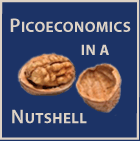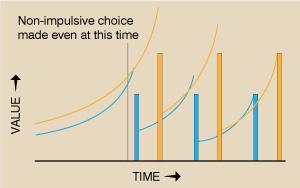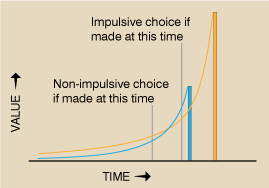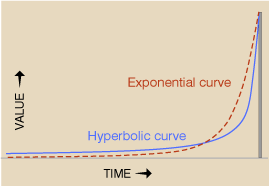

`
-------
Introductory section will go here, ending with summary such as below:
.
My argument can be outlined as follows. Detailed discussion of each point follows below.
-------
How to explain choices: top-down versus bottom-up. Some authors think that sophisticated human choice-making comes from subtle faculties that defy explanation. Some others think it can be explained by rational choice theory (RCT). But in both of these approaches we govern our animal instincts from the top down. So What? ![]()
Many people have been averse to bottom-up explanations.Explaining human choices from lawful combinations of simple processes has been called reductionism. Fear of reductionism has limited the science of choice. ![]()
We evolved to seek reward. The reward process itself evolved because of its adaptiveness — selecting individual behaviors is more adaptive than selecting whole organisms; but within an organism reward is the ultimate determinant of choice, regardless of adaptiveness. Just as individual organisms can be seen as vehicles for transmitting their genes, behaviors can be seen as mechanisms for obtaining reward. So What? ![]() [Pico 179-180: “A parallel [that] has been proposed… fittest over time”]{People seek reward} Note: Picoeconomics is not HTML linkable. For the moment, I have linked to a similar passage in the BBS-McKay commentary ("Non-instrumental belief based on singularity").
[Pico 179-180: “A parallel [that] has been proposed… fittest over time”]{People seek reward} Note: Picoeconomics is not HTML linkable. For the moment, I have linked to a similar passage in the BBS-McKay commentary ("Non-instrumental belief based on singularity").
Reward selects the processes it follows. Reward that follows a mental process is what selects that process to get repeated. Rewards are events that induce the mental mechanism, reward. So What? ![]()
Reward is a unitary phenomenon. Although different parts of the brain seem to specialize in evaluating rewards at different time ranges of delays, the evaluations are consistent among parts, and consistent with hyperbolic discount curves. [Social Neuro: Motivational conflict is temporal… “synchronic conflict (Ross, 2010)”]
The internal marketplace of reward. Alternative mental processes (some leading to behaviors) compete on the basis of expected, discounted* reward. They are tried out for how they feel, one after the other, a process called vicarious trial and error (VTE). [OxfordMacGuffin: “The neural mechanics… imagining something else”]
Hyperbolic delay discounting. In contrast to RCT, four decades of controlled experiments have now shown that the selecting power of a reward* is inversely proportional to its expected delay. A graph with delay on the x axis and selecting power on the y axis forms a hyperbola. [EconMod: “Psychologist Herrnstein…neglected the fourth prediction.”]
Alternatives to hyperbolic discounting. A fundamentally hyperbolic discount curve is not the only reason preference might change as possible rewards get closer. Some simple possibilities are easy to dismiss. [Munich “Hyperbolic discounting seems… social demand or other theoretical notions] We will later deal with a more complicated one, beta-delta discounting. {Sudden appetites are positive feedback phenomena}
A foundational experiment:
Change of preference over time in pigeons. When choosing between an SS food reward and an LL reward four seconds later, birds shift from choosing SS to LL as the delay before the SS goes from 0 to 12 seconds. [Ainslie & Herrnstein: Method… figure ] A&H 81 not in HTML. I used a link to the PDF version online.
A foundational experiment:
Change of preference over time in people. A majority of both college students and substance abuse patients reported preference for an SS of $50 over an LL of $100 changed their preference as the delay before the SS was increased. [Ainslie & Haendel, Self-reports of temporary preference section, with figures 9-4 and 9-5-- currently not in Word] Not online in any format.
How did hyperbolic discount curves survive natural selection? Hyperbolic curves create impulsiveness, the tendency tend to prefer smaller, sooner (SS) rewards to larger, later (LL) rewards temporarily, when the SS rewards are imminent. And foresight alone can’t prevent these temporary preferences.[“Hyperbolic discounting raises… self come into question soon after]
Notes of references to be added
Robbins (1932/1985)


